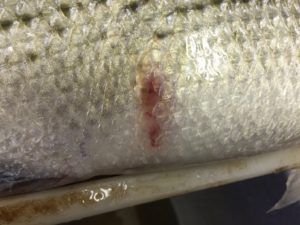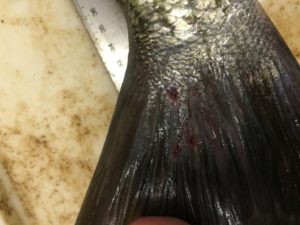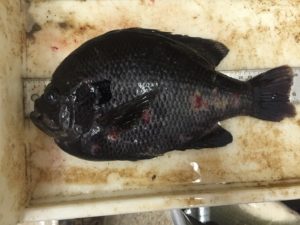Streptococcosis, also known as strep, is the term for diseases caused by a genus of bacteria, Streptococcus. These bacteria are known to be very aggressive in fish causing large die-offs of over 50% mortality within a few days, hindering production and causing massive economic loss.
Aside from rapid and increasing mortality, fish suffering from strep can exhibit a long list of potential symptoms but hemorrhaging, “pop-eye”, and swimming or behaving abnormally, such as spinning, are commonly observed. Erratic behavior can be one of the first tell-tale signs, due to infection of the brain and nervous system, but not all infected fish are symptomatic.


Like most other diseases the key to prevention is minimizing stress, which can be achieved by avoiding crowded stocking conditions and poor water quality. These conditions should particularly be avoided during summer months when water temperatures are at their highest. Commonly stocked fishes like largemouth bass, bluegill, striped bass, golden shiner, channel catfish, and tilapia are found to be susceptible to strep infections.
To prevent further spread, reduce overall mortality, and minimize economic loss, fish should be isolated from other populations immediately if strep is suspected. If a strep confirmation is made rapidly and fish are readily accepting feed, an antibiotic may be prescribed. Sometimes strep can become a reoccurring issue and vaccinations are needed, although not always available or effective.
Fish suspected to have a strep infection can be sent to The Texas AgriLife Extension Service Aquatic Diagnostic Laboratory for a gram positive streptococci selective media isolation to confirm diagnosis.
For more pictures and information on strep, please read Streptococcal Infections in Fish.

